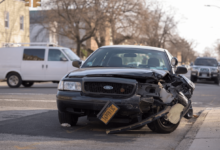How to Teach Teens the Importance of Defensive Driving

As parents and instructors, our foremost goal is to impart the importance of defensive driving to teen drivers. This guide explores the essence of defensive driving and underscores its criticality in shaping safe driving habits among teens. Additionally, it addresses the hazards associated with distracted driving, examines the influence of peer pressure on teen driving behavior, and provides strategies to help young drivers maintain composure and focus while driving. The guide also offers insights into preparing teens for various driving scenarios and fostering consistent adherence to defensive driving practices. Join us in empowering our teens with the knowledge and abilities necessary for road safety.
What is Defensive Driving?
Defensive driving involves developing proactive driving habits focused on safety and awareness, typically taught through specialized courses. It enhances drivers’ ability to anticipate and react to potential road hazards. Alertness and maintaining a safe distance enable drivers to respond to traffic changes and unforeseen events quickly. Defensive driving also stresses continuous road scanning and effective mirror use for situational awareness. These courses delve into driver psychology, aiding in understanding common behaviors and fostering informed decision-making. Graduates often show enhanced decision-making abilities and a decreased accident risk.
Why is it Important for Teen Drivers to Learn Defensive Driving?
Learning defensive driving is crucial for teen drivers as it improves driving skills, fulfills licensing requirements, and reassures parents about their child’s safety. Investing in defensive driving courses and practicing techniques helps teens minimize accident risks and make informed decisions. Emphasis on hazard awareness, safe distances, and emergency responses equips teens with confidence to handle difficult driving scenarios. This provides parents peace of mind and instills teens’ confidence to manage unexpected situations while driving.
The Dangers of Distracted Driving for Teens
Distracted driving poses significant dangers for teen drivers. It leads to a higher risk of accidents and compromised safety on the road as they often fail to recognize and respond appropriately to various driving conditions.
What are the Most Common Distractions for Teen Drivers?
Common distractions for teen drivers include using mobile phones, interacting with passengers, and focusing on in-car entertainment systems, diverting their attention from the road, vehicles, and pedestrians.
Mobile phone use, especially texting, poses a significant danger by diverting the driver’s gaze from the road, increasing the risk of accidents. Interacting with passengers, though seemingly harmless, can split attention and lead to distractions. In-car entertainment systems, such as adjusting music or navigation, can also divert hands and eyes from driving, potentially creating hazardous situations.
How Can Teen Drivers Avoid Distracted Driving?
Teen drivers should adopt defensive habits like keeping mobile phones away, reducing passenger interactions, and concentrating fully on driving to prevent distracted driving. Setting GPS directions before starting a journey helps maintain focus, minimizing the need for adjustments while driving. Avoiding eating or drinking while driving is advisable to prevent distractions. Establishing a driving routine, including regular vehicle maintenance checks, enhances safety for young drivers on the road.
The Role of Peer Pressure in Teen Driving
Peer pressure significantly influences teenagers’ driving behaviors, often leading to aggressive driving behaviors such as speeding, tailgating, and other risky maneuvers that compromise road safety.
How Can Parents and Instructors Address Peer Pressure in Teen Drivers?
Parents and instructors can tackle peer pressure among teen drivers by enrolling them in thorough driving courses highlighting the risks of aggressive driving. They can also reinforce positive driving behaviors through ongoing guidance and support.
Instilling responsibility and accountability in young drivers is essential to help them resist negative peer influences. Open communication about safe decision-making on the road and the repercussions of reckless driving is crucial.
Setting a positive example as a parent or mentor by obeying traffic laws and practicing safe driving habits can profoundly influence the behavior of young drivers.
Teaching Teen Drivers to Stay Calm and Focused on the Road
Teaching teen drivers to stay calm and focused on the road is essential for their safety, especially when encountering challenging road conditions and unexpected hazards that require a composed and attentive response.
What Techniques Can Help Teen Drivers Stay Calm and Focused?
Techniques like deep breathing, regular practice, and avoiding heavy traffic can improve a teen driver’s focus and calmness. Mindfulness practice, focusing on the present moment, can enhance awareness and attentiveness while driving. Establishing a driving routine and setting clear goals can also provide structure and reduce anxiety during driving.
Preparing for Different Driving Scenarios
Preparing teen drivers for different driving scenarios is crucial to ensure they can handle various road conditions and obstacles effectively, enabling them to make informed decisions and remain safe at all times.
How Can Teen Drivers Prepare for Adverse Weather Conditions?
Teen drivers can prepare for adverse weather conditions by receiving thorough education on safety techniques for handling slippery roads, limited visibility, and other weather-related challenges. Proper education empowers young drivers to navigate rain, snow, fog, or ice cautiously and confidently. Understanding how weather affects road safety enables informed decision-making and adjustment of driving behaviors. Learning to adapt speed, increase following distance, and use headlights effectively in various weather scenarios is crucial for teen drivers.
What Should Teen Drivers Do in Case of a Car Accident?
Teen drivers should prioritize safety for everyone involved in a car accident, contact emergency services promptly, and document the accident scene. Ensuring immediate emergency response addresses any injuries swiftly and provides official documentation. After ensuring everyone’s well-being, exchanging car insurance details with other parties, like those available through services such as 1-800-ASK-GARY, establishes clear communication for potential claims.
The Importance of Practicing Defensive Driving Skills
Teens must practice defensive driving to develop effective habits, improve driving skills, and ensure road safety over time. Regular practice helps them anticipate hazards, reduce accident risks, and promote responsible driving. Adhering to speed limits, maintaining safe distances, and checking blind spots consistently fosters a proactive driving approach focused on safety. By honing these skills through consistent practice, teens gain confidence and improve situational awareness, equipping them to navigate challenging road conditions calmly and skillfully.
How to Encourage and Reinforce Good Defensive Driving Habits in Teens
Parents play a crucial role in nurturing good defensive driving habits in teens. They should actively demonstrate safe driving behaviors and positively reinforce their teens’ efforts. Open discussions about the importance of cautious driving and responsibility are effective strategies. Leading by example, such as obeying traffic laws, using seat belts, and avoiding distractions, reinforces the seriousness of safe driving to teens and encourages them to follow suit.






